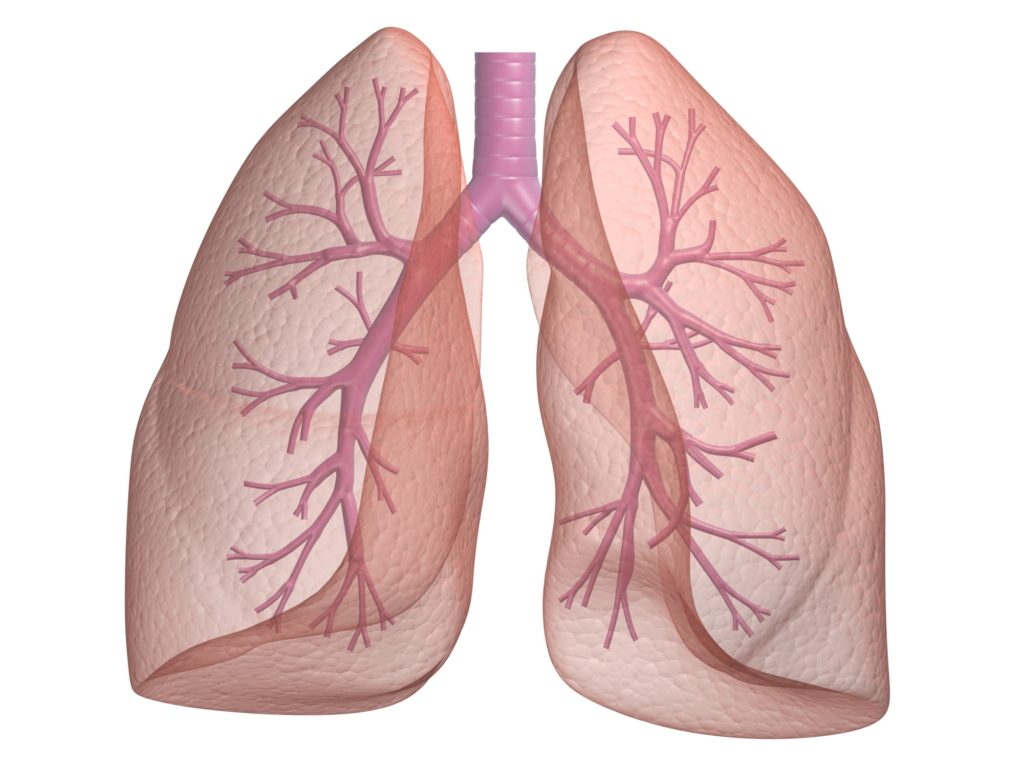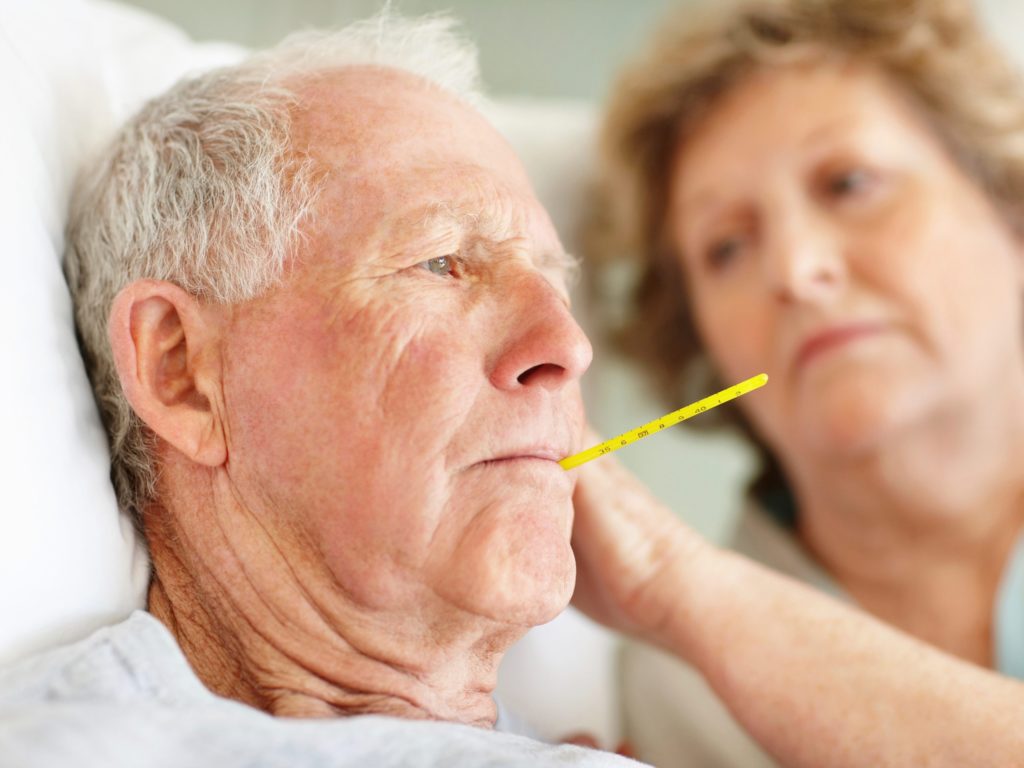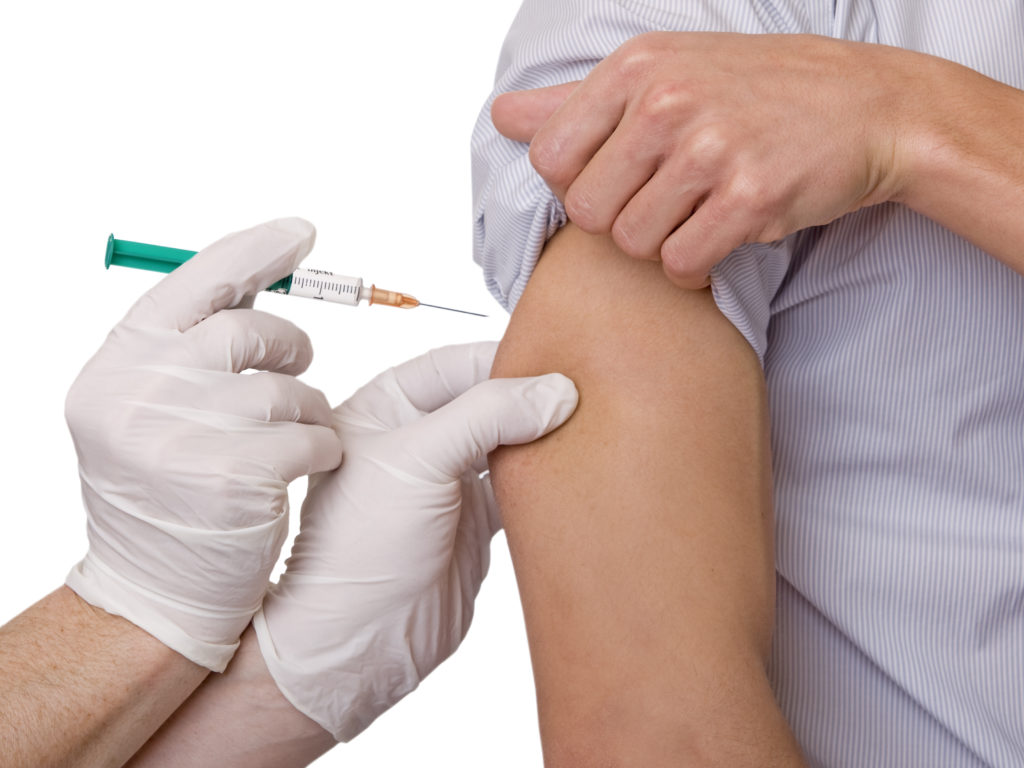Pneumonia Disease is an infection of the lungs most often caused by a virus or bacterium. The infection affects more precisely the pulmonary alveoli, these tiny balloon-shaped sacs located at the tip of the bronchioles. It usually affects only one of the five lobes of the lung (three lobes in the right lung and two in the left), hence the term lobar pneumonia. When pneumonia also reaches the bronchi, it is called bronchopneumonia. Pneumonia, in fact, means very different infections that are life-threatening. Thus, if pneumonia appears as a complication of a serious illness or in an elderly person, it’s fatal. In very rare cases, pneumonia can also be fatal in a healthy person.
The disease usually manifests itself in a cough often accompanied by sputum, shortness of breath, fever, and chills. Pneumonia usually catches itself as the flu or a cold, by inhaling contaminated particles. In some cases, it occurs after another respiratory infection, such as the flu or bronchitis, which “degenerates” and settles in the alveoli of the lungs. Some of the symptoms may last several weeks. It is usually not contagious.
Pneumonia Disease Causes
Almost all types of pneumonia are caused by a virus or bacterium. When the microbe attacks the lungs, the body reacts by triggering an inflammatory reaction. The alveoli filled with pus and inflammatory fluid, which causes difficulty breathing.
The physician must distinguish between two modes of contraction of pneumonia: contraction in the hospital (nosocomial pneumonia) and contraction outside the hospital (community or community-acquired pneumonia). Nosocomial pneumonia is generally more dangerous because it occurs in people impaired by another disease. At the hospital, pneumonia is often transmitted by mechanical ventilation devices (intubation) to intensive care units.
The exact type of bacteria or virus responsible for pneumonia in a given patient is only known in half of the cases, partly because laboratory techniques are not performing well. For information, here are the ones that are most frequently found in people with pneumonia.
Pneumonia Disease: More Causes
Bacteria: Bacterial infections usually cause typical pneumonia (see Symptoms section). Most of the time, Haemophilus influenza, Staphylococcus aureus, or Streptococcus pneumonia (causing pneumococcal pneumonia) bacteria are responsible.
Atypical pneumonia manifests itself in symptoms that are less pronounced than typical pneumonia. For example, some people with pneumonia have no fever or chest pain. Pneumonia resembles a respiratory infection, such as bronchitis, sinusitis, or influenza (influenza). Among the bacteria that cause atypical pneumonia are Mycoplasma pneumonia (causing mycoplasma pneumonia), Chlamydia pneumonia, and Legionella pneumophila (responsible for Legionnaires’ disease).
The most frequent are influenza and parainfluenza viruses, respiratory syncytial virus, cold viruses (rhinoviruses), herpes-like viruses, or even SARS. The influenza virus, that is to say, the influenza virus sometimes affects the pulmonary alveoli and thus causes viral pneumonia. Subsequently, the respiratory system weakened by the viral infection can open the door to a potentially more serious bacterial superinfection.

Pneumonia Disease Prevalence
According to the Quebec Lung Association, between 200 000 and 300, 000 Canadians have pneumonia each year and the mortality rate can reach 30% in certain populations (elderly, hospitalized, etc.). Pneumonia acquired in the hospital affects between 0.5% and 1% of inpatients, but up to 40% of patients under mechanical ventilation in the intensive care unit.
Pneumonia Diagnostic
The doctor evaluates the symptoms, asks about family history, and auscultate the lungs. He may administer a radiological examination of the lungs and ask for an analysis of the pulmonary secretions (expelled by coughing). If necessary, it will use other tests, such as the search for bacteria in the blood.

Pneumonia Complications
Pneumonia cured most of the time in two weeks or a little more. However, more time is often needed before recovering completely.
Although they are rare, some serious complications are possible:
- Pleural effusion: It is the accumulation of inflammatory fluid between the two layers of the pleura, which causes a compression of the lung. If there is a lot of liquid, it’s removed by suction. Exceptionally, this fluid may persist and become purulent. Surgery is often necessary.
An abscess in the lung. - Respiratory distress. When pneumonia affects both lungs, breathing becomes extremely difficult. Assisted ventilation is often necessary.
- A septic shock, that is to say, a generalized infection of the body due to the passage of the bacteria from the lungs to the blood. This occurs mainly with pneumococcal pneumonia.
With antibiotics, pneumonia causes fewer deaths than before. Nevertheless, both pneumonia and influenza (influenza) is the leading cause of death from an infectious disease in Canada. Very old people with a lower immune system and people with other serious illnesses are more likely to succumb to it.

Pneumonia Symptoms
- A sudden rise in fever up to 41 ºC (106 ºF) and severe chills
- Short breath, rapid breathing, and pulse
- A cough; at first, it is dry. After a few days, it becomes greasy and accompanied by yellowish or greenish secretions, sometimes streaked with blood.
- Thoracic pain that intensifies during coughing and deep breathing
- Degradation of the general state (fatigue, loss of appetite)
- Muscular pains
- Headaches
- Wheezing
Some signs of severity must lead to immediate hospitalization.

People at risk and risk factors (pulmonary infection)
1. People at Risk
- Children: The risk increases more for those who exposed to second-hand smoke.
- Seniors, especially if they live in nursing homes.
- People with chronic respiratory disease (asthma, emphysema, COPD, bronchitis, cystic fibrosis).
- People with a chronic disease that weakens the immune system, such as HIV / AIDS, cancer, or diabetes.
Who receive immunosuppressive therapy or corticosteroids are also at risk of opportunistic pneumonia. - People who have just had a respiratory infection, such as the flu.
- Inpatients, especially in an intensive care unit
- Persons exposed to toxic chemicals in the course of their work (for example, varnishes or paint thinners), bird breeders, workers engaged in the manufacture or processing of wool, malt, and cheese.
Aboriginal populations in Canada and Alaska are at increased risk of pneumococcal pneumonia.
2. Risk factors

Pneumonia Prevention
Basic Preventive Measures
- Have a healthy lifestyle (sleep, eating, physical exercise, etc.), especially during the winter. See our Strengthening our immune system for more information.
- No smoking helps prevent pneumonia. Smoke makes the airways more vulnerable to infections. Children are particularly sensitive.
- Wash hands regularly with soap and water or an alcohol-based solution. The hands are constantly in contact with microbes that can cause all kinds of infections, including pneumonia. These come into the body when you rub your eyes or nose and when you put your hands to your mouth.
- When taking antibiotics to treat an infection, it is important to follow the treatment from the beginning to the end.
- Observe the hygiene measures displayed in clinics and hospitals such as washing hands or wearing a mask if necessary.
Other measures to prevent the onset of the disease:
- A vaccine against influenza: The influenza virus can cause pneumonia directly or indirectly. Thus, the influenza vaccine reduces the risk of pneumonia. It’s renewed every year.
- Specific vaccines: Pneumococcal vaccine protects against pneumonia with Streptococcus pneumonia, the most common in adults (it combats 23 serotypes of pneumococci). This vaccine (Pneumovax®, Pneumo®, and Pnu-Immune®) is most suitable for adults with diabetes or COPD, people with weakened immune systems, and those aged 65 years and older. Its effectiveness has been convincingly demonstrated in seniors residing in long-term care facilities.
Prevenar® vaccine offers good protection against meningitis in young children, and slight protection against ear infections and pneumococcal pneumonia. The Canadian National Advisory Committee on Immunization advocates its systematic administration for all children 23 months of age or younger to prevent meningitis. Older children (24 months to 59 months) may also be vaccinated if they are at high risk of infection. The American Academy of Pediatrics also recommends this vaccination.
In Canada, systematic vaccination against Haemophilus influenza type B (Hib) is recommended for all infants at the age of 2 months. Three conjugate vaccines registered in Canada: HbOC, PRP-T, and PRP-OMP. The number of doses varies according to the age at the first dose.

Measures to Promote Healing and Prevent Aggravation
First of all, it is important to respect a period of rest. Throughout the course of the illness, avoid exposure to smoke, cold air, and air pollutants as much as possible.
Measures to prevent complications
If the symptoms of pneumonia persist with the same intensity 3 days after the start of antibiotic treatment, you should see your doctor as soon as possible.

Medical treatments
Treatment depends mainly on the cause of pneumonia (bacteria, virus, fungus …). In order to choose the appropriate treatment, the physician also relies on age, health status, and a physical examination of the person and, if necessary, on various complementary analyses.
Treatment at home
Bacterial pneumonia: In healthy individuals, most acquired pneumonia in the community treated with a macrolide antibiotic (erythromycin, clarithromycin, azithromycin). There is usually no reason to go to the hospital. The bacteria responsible for pneumonia are increasingly resistant to antibiotics. The phenomenon is particularly worrying in the case of pneumonia acquired at the hospital. If the antibiotic does not appear to take effect after a few days, it may be necessary to change the antibiotic. To avoid contributing to resistance, it is important to take your treatment to the end, as prescribed by the doctor.
Viral pneumonia: Most of the time, viral pneumonia heal without treatment. Antibiotics are not effective against viruses. In some cases, antiviral drugs used, such as oseltamivir (Tamiflu®) or zanamivir (Relenza®). If needed, other medications will help relieve chest pain and lower fever (paracetamol, also called acetaminophen, and more rarely Ibuprofen in Quebec).

Pneumonia Disease: More Follows
As for a cough, it’s not eliminated completely because it helps to expel the secretions that clutter the bronchi. Cough syrups are generally discouraged by doctors. To relieve coughs and sore throats, natural solutions, such as drinking hot water in which a little honey is added, are preferable.
Respiratory physiotherapy. This technique, especially used in people with chronic respiratory disease, can help to declutter the airways. In Quebec, respiratory therapists teach patients. Percussion movements performed on the back of the patient, which triggers a cough and evacuates the secretions. The person lying on the stomach, the upper body tilted down. Respiratory physiotherapy seems to help shorten healing time and prevent complications.
A visit to the doctor four to six weeks after diagnosis and a chest x-ray will ensure that pneumonia is well cured. If it does not heal within the usual time frame, the doctor will recommend an appropriate investigation, such as a CT scan or bronchoscopy. Persistent pneumonia can be caused by a tumor in a bronchus.
Pneumonia Disease: Treatment in hospital
When pneumonia is severe or the risk of complications is high, hospitalization necessary. Drugs can then be administered intravenously or oxygen supplied if blood oxygen levels are found too low. Most people hospitalized for pneumonia are babies, young children, the elderly, or impaired and chronically ill.
For better comfort:
- The seating position is the most comfortable. Horizontal breathing is more laborious. At night, opt for a slightly inclined position. Raise the back with pillows.
- Applying a warm, moist compress on the chest helps relieve chest pain.
- Well hydration
- In the early stages of the disease, avoid exposing yourself to cold air.
- Stop demanding physical activities. Recover them gradually, according to capacities.
- Do not take cough syrup without asking the doctor. Some over-the-counter syrups may prevent mucus evacuation and worsen the situation.


